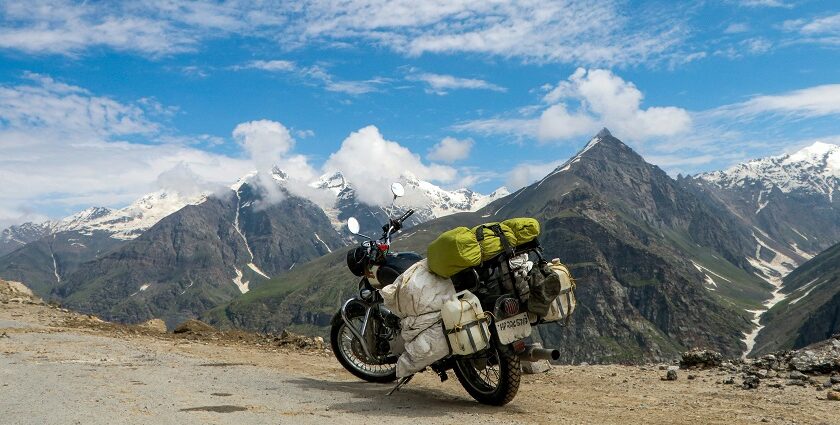Valleys in Ladakh offer a lot more than landscapes; each valley is a repository of nature, culture, and adventure. From cliff-hanging monasteries to blue lakes and glacial rivers flowing through broad stretches, each valley beckons the tourist to the unique life of Ladakh. Along the way, you will be treated to snow-crowned mountains, boulder-strewn terrain, centuries-old monasteries, and nomad villages that are pendants of a living cultural heritage. Experience awe-inspiring landscapes, remnants of the past, and sacred traditions that will leave an indelible mark.
Top 10 Valleys In Ladakh
Relish a decade of exciting valleys in Ladakh, from snow deserts and glacial ice rivers at elevation to holy monasteries and grazing grounds.
1. Nubra Valley
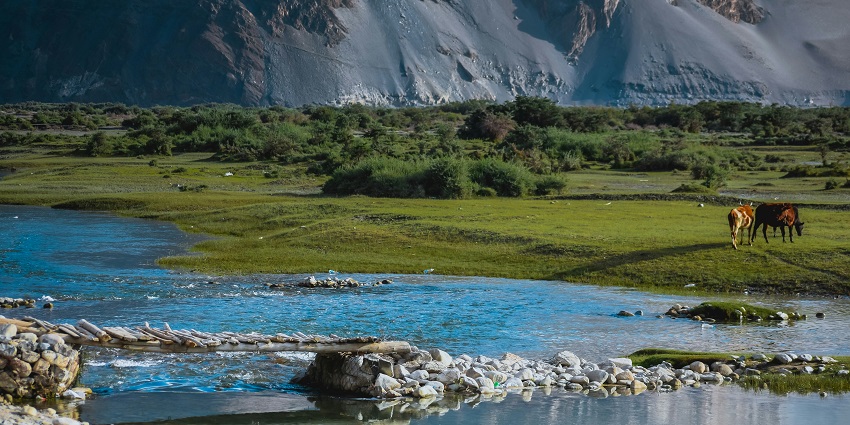
Nubra Valley, some 150 km from Leh, is the most fascinating valley of Ladakh. It is formed by the confluence of the Shyok and Nubra rivers and is a strange mix of yellow sand dunes, green orchards, and running streams against the backdrop of rugged, high-altitude desert landscape. Diskit village is Nubra’s largest village, towering above the valley, with Diskit Monastery and a 32-meter-tall Maitreya Buddha statue, the epitome of Ladakhi culture and spirituality. The Hunder Sand Dunes and double-humped Bactrian camels of the desert give the desert adventure a breathtaking height in the Himalayan foothills.
Main Attractions: Diskit Monastery, Hunder Sand Dunes, double-humped camels, orchids, and river scenery
Best Time To Visit: June to September for pleasant climate and outdoor activities
How To Reach: Road from Leh through Khardung La Pass
Suggested Read: Things To Do In Nubra Valley
2. Pangong Lake Valley
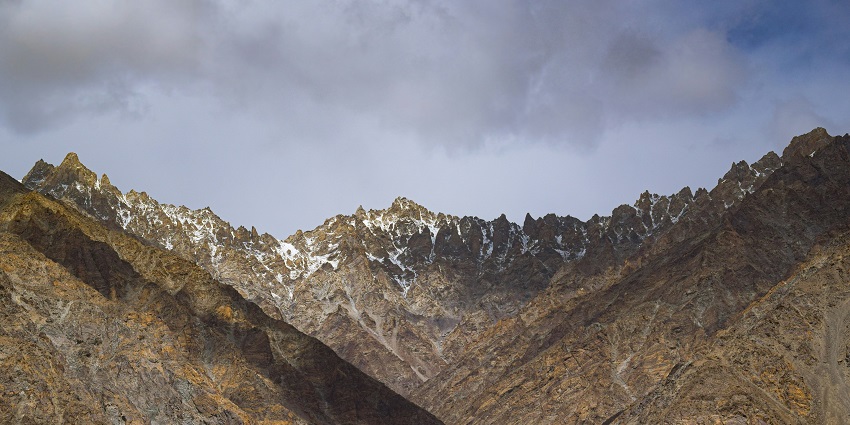
Pangong Lake Valley, located around 160 km from Leh, is without a doubt the most beautiful and renowned valley of Ladakh. Its high-altitude lake runs along the India-China border, shining with various colours by day, emerald green and turquoise, indigo blue, into a strange and mystical landscape. It is encircled by rocky ridges that are desolate, lending it a cinema set appearance. It possesses along its lake shore peaceful campsites, shoots, and observations of migratory birds like Brahminy ducks and bar-headed geese. The nearby village offers a glimpse of the Ladakhi way of living with its indigenous houses, local cuisine, and simple way of life.
Main Attractions: Colour-changing lake, lakeside camps, boating, and Pangong Lake
Best Time To Visit: May to September for open landscape and clear sky
How To Reach: By road from Leh via Chang La Pass
3. Zanskar Valley
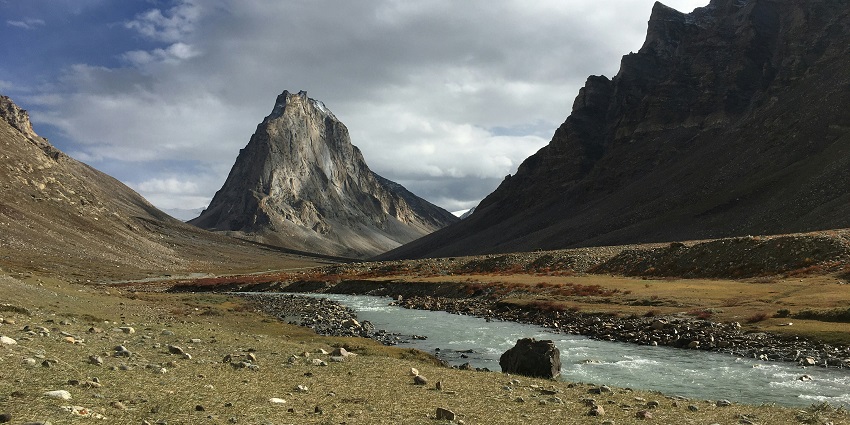
Photo: Sudeshna Golder / Unsplash
Zanskar Valley, approximately 250 km from Leh, is one of the remotest and toughest valleys in Ladakh, famous for adventure and unspoiled nature. Zanskar River forms the valley, and snow-white headed mountain ridges and steep cliffs surround it; therefore, the scenery is dramatic and theatrical. Zanskar is famous for the winter adventure of the Frozen River Trek or Chadar Trek, in which the river is a sheet of ice trail attracting tourists from all over the globe. In summer, trekking and rafting on green trails along the river are organised.
Main Features: Hiking on the ice river, river rafting, monasteries, and tough terrain
Best Time To Visit: Winter (December to February) for trekking on the frozen river; summer (June to September) for trekking and rafting
How To Reach: Leh via road from Kargil or by air and taxi
Suggested Read: Puga Valley In Ladakh
4. Markha Valley
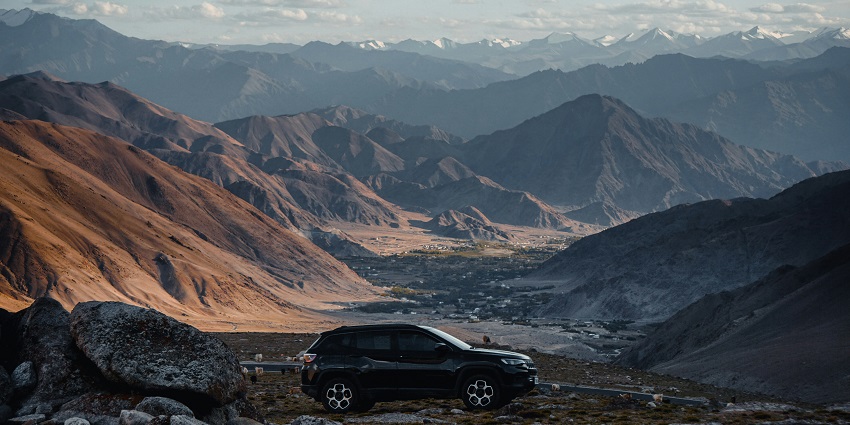
85 km from Leh, the Markha Valley is the most visited trek and nature destination.
In between the Ladakh and Zanskar ranges, the valley lies as a combination of meadows, dry hills, and streams. The trekking route passes through representative Ladakhi villages like Hemis Shukpachan and Rumbak, where one gets glimpses of home-stays, agriculture, and local culture. The old monasteries and prayer flags also make the destination spiritually interesting, with a similar proportion of adventure and culture. Himalayan marmot wildlife, ibex, and other elusive birds provide trekking elements.
Main Attractions: Trekking routes, villages, monasteries, wildlife, and Himalayan scenery
Best Time To Visit: June to September
How To Reach: By road from Leh and local transport up to the trailhead afterwards
5. Hemis Valley
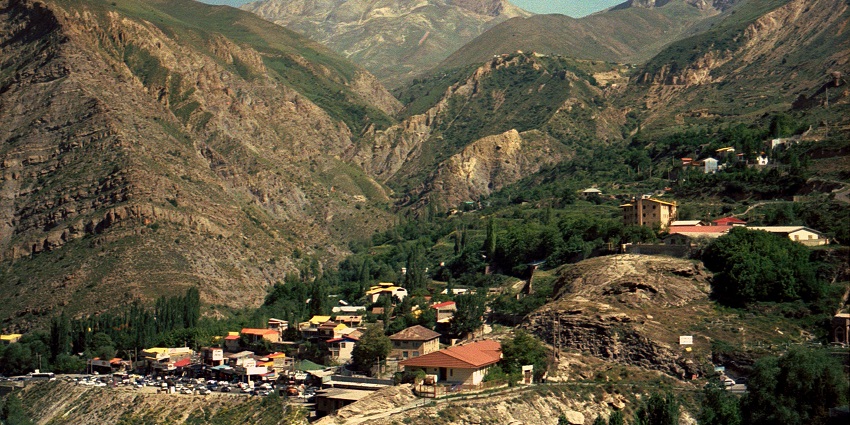
Photo: Odile / Unsplash / Image For Representation Only
Hemis Valley, some 45 km from Leh, is renowned for its religious and cultural significance.
Hemis Valley contains the Hemis Monastery, one of Ladakh’s largest and wealthiest, famous for hosting the Hemis Festival annually, featuring royal masked dances, traditional music, and rituals that are a paean to Buddhist culture. The surrounding scenery is a mix of hard hills, villages, and streams, a peaceful retreat for tourists. Tourists are able to go to ancient monasteries, prayer halls, and frescoes dating back centuries, depicting Buddhist sermons. The valley villages offer homestays to immerse oneself in Ladakhi food and culture. Hemis Valley is ideal for a tourist who would prefer a mix of culture, religion, and nature.
Main Attractions: Hemis Monastery, Hemis Festival, prayer halls, and the village countryside
Best Time To Visit: July to September for the weather and festivals
How To Reach: By road from Leh
Suggested Read: Enhance Your Vacation With These Things To Do In Ladakh
6. Tso Moriri Valley
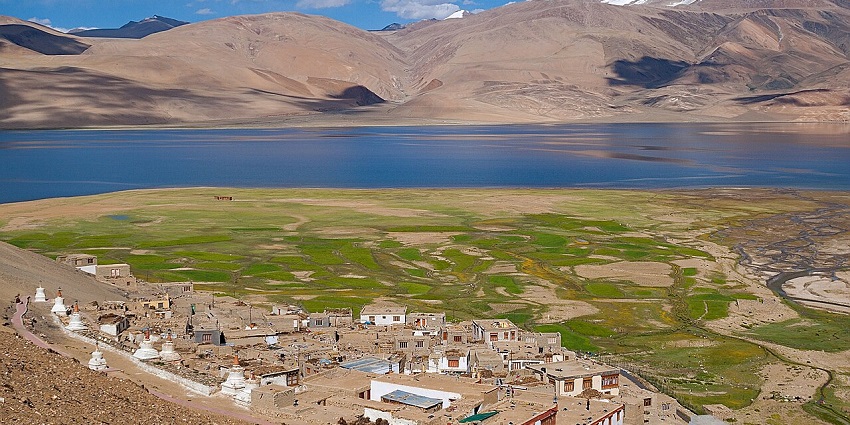
Photo: Rafał Kozubek / Wikimedia Commons
240 km from Leh, Tso Moriri Valley is Ladakh’s quietest and least spoiled of its many valleys. The most striking feature is the Tso Moriri Lake, a high-altitude saline lake with snow-capped mountains and a serene landscape of meditation, photography, and wildlife observation. The valley hosts Tibetan wild ass, black-necked crane, and marmot, and thus it is ideal for nature and bird-watchers. Homestay and cultural experiences with the local nomadic Changpa tribe, yak grazing, and traditional painting are offered from the proximate Korzok village.
Main Attractions: Tso Moriri Lake, bird watching, nomadic culture, and mountain landscape
Best Time To Visit: June to September, when the lake is operational and wild animals are in enormous numbers
How To Reach: Road from Leh through Chang La or by joining the guided tours
7. Stok Valley
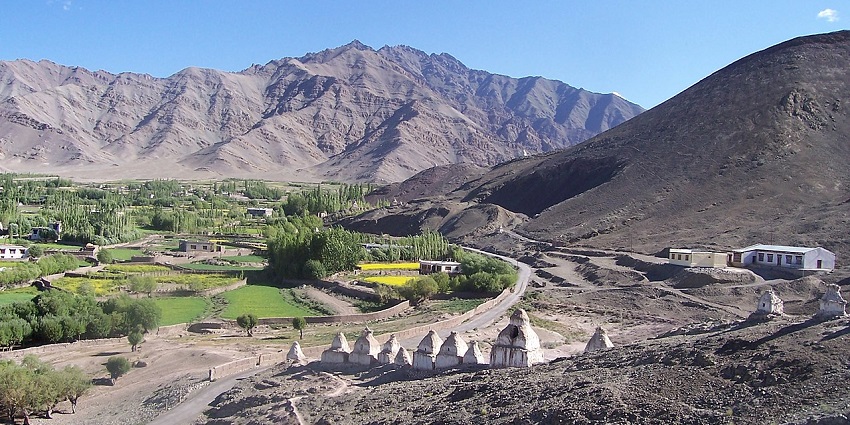
Photo: curiouslog /Wikimedia Commons
15 km from Leh, Stok Valley is an easily accessible and stunning valley with culture and nature intertwined. The valley boasts Stok Palace, the erstwhile home of Ladakh’s royal family, which has been transformed into a museum with its relics, thangkas, and royal memorabilia. Stok Monastery is a sacred location where pilgrims can observe prayer rituals and chant books of classical Buddhism. Trekking trails with sweeping views in between meadows, streams, and villages of Stok Valley provide insight into Ladakhi village life.
Main Attractions: Stok Palace, monastery, villages, and trekking trails
Best Time To Visit: May to October for a pleasant climate and lush pastures
How To Reach: Leh road
Suggested Read: Places To Visit In Ladakh
8. Sham Valley
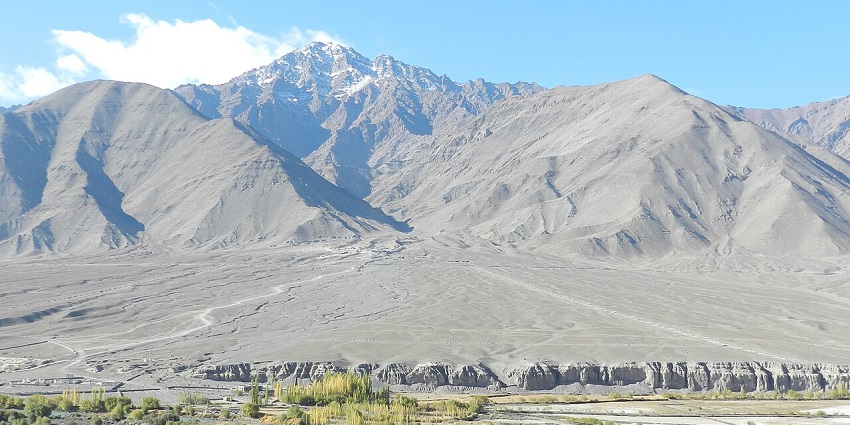
Photo: YUVRAJ ANAND / Wikimedia Commons / Image For Representation Only
Sham Valley, 25 km from Leh, is a world-famous and culturally rich valley for adventure-lovers seeking a dash of farming, agriculture, and religiosity. Monasteries such as Thiksey, Spituk, and Stok exist here, each highlighting the awe-inspiring architecture, prayer halls, and ancient scrolls. Homestays could also be organised in nearby village areas, where tourists will have exposure to food, agriculture, and culture. Nice trekking trails, picturesque
Main Attractions: Monasteries, villages, homestays, and culture
Best Time To Visit: May to September for farming and trekking
How To Reach: By road from Leh
9. Zangskar Valley
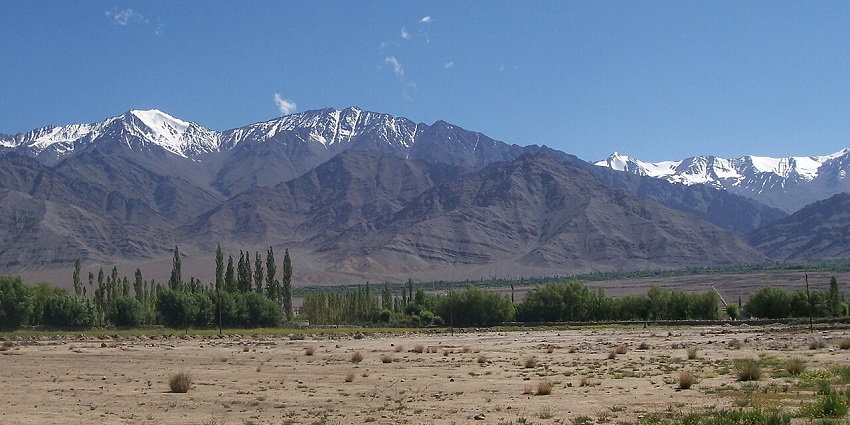
Photo: curiouslog / Wikimedia Commons
The Zangskar Valley, 220 km from Leh, is one of Ladakh’s most inaccessible and unreached valleys, beckoning the exploratory and solo travellers. The valley is bisected by the Zangskar River, dominated by sheer gorges, cliff-scaping elevations, and boulder-strewn roads. In winter, the Frozen River Trek converts the valley into a snow wonderland, attracting adventure and thrill seekers from around the globe. The valley is dotted with old monasteries, including Karsha and Stongdey, where spiritual insights and enlightenment of the centuries-old Buddhist religion are found.
Main Attractions: Frosty River Trek, monasteries, wildlife, and scenic gorges
Best Time To Visit: Winter for a frosty trek; summer (June–September) for trek and tourism
How To Reach: By road from Leh via Kargil or by joining guided expeditions
Suggested Read: Ladakh Travel Guide
10. Lamayuru Valley
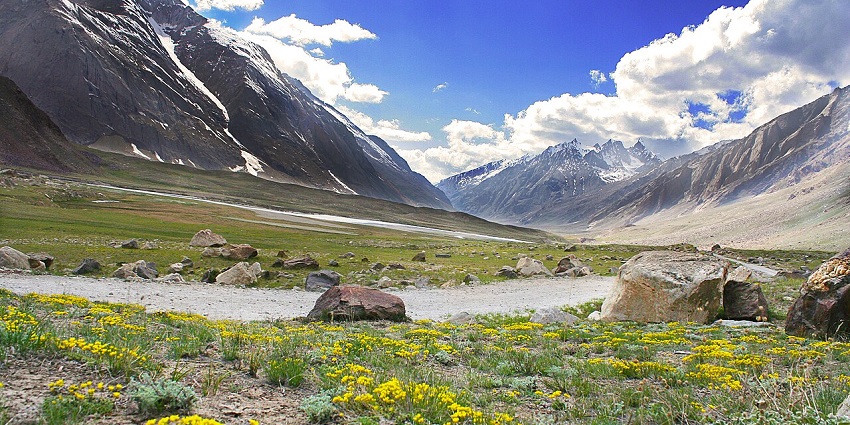
Photo: Narender9 / Wikimedia Commons / Image For Representation Only
The Lamayuru top-hill Monastery is towering and famous for its ancient frescoes, prayer halls, and annual festivals. The valley itself is known as the “Moonland” due to its barren landscape, on which wind and water erosion have sculpted over the years. Lamayuru is trekkable, photogenic and offers rock outcrop sightseeing, caves and ancient temples. The villages provide one with a glimpse into Ladakhi culture, cuisine and hospitality, whereas the mountains surrounding it provide unparalleled views and peaceful strolls.
Main Attractions: Lamayuru Monastery, moon landscapes, ancient temples, and trek routes
Best Time To Visit: June to September for comfortable trekking and nice scenery
How To Reach: Road from Leh
From the white snow-peaks of Ladakh to peaceful lakes, old monasteries, and nomadic camps, each valley in Ladakh is a festival of nature, culture, and heritage. With trekking over mountain passes guarded by sentries, with visits to old monasteries, and navigating uncharted lands, the Ladakh valleys are something for everyone, for families, photographers, and nature lovers. Take your next holiday with TripXL and experience the Ladakh valleys, challenging your sense of adventure, serenity, and culture at every step.
Cover Photo: Pixels Of Life / Unsplash


 WhatsApp
WhatsApp
 Twitter
Twitter
